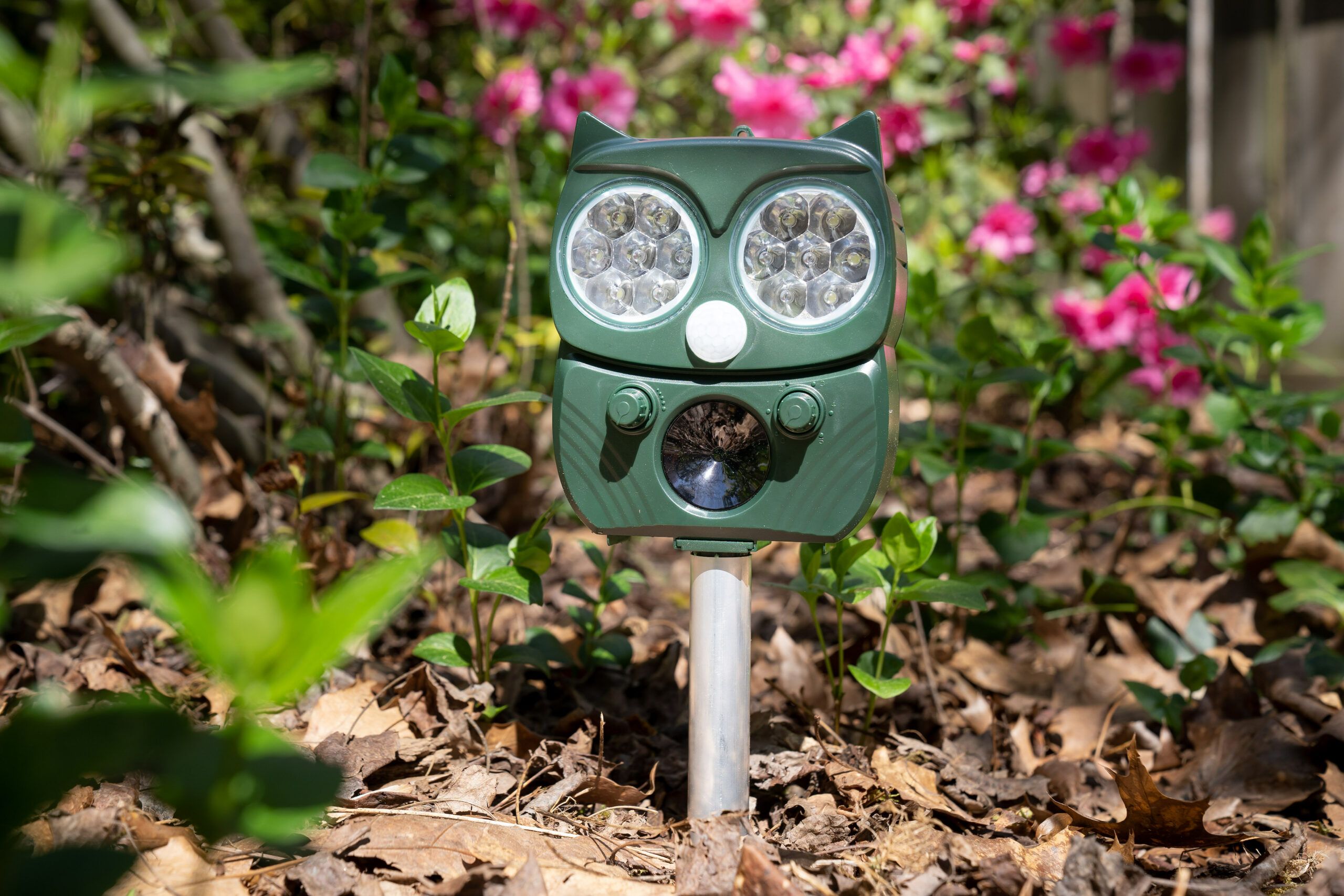What plants will keep deer away? Plants such as lavender, marigold, and rosemary can help keep deer away from your garden. These plants have strong scents that deter deer.
Welcome to our guide on plants that can keep deer away from your garden. If you’re tired of deer munching on your plants and destroying your hard work, then you’ve come to the right place. Deer can wreak havoc in your garden, but there are natural and effective ways to keep them away.
One such method is to plant certain types of flora that have strong scents that repel deer. We will explore some of the best plants to deter deer and provide you with the information you need to create a beautiful and protected garden. So, let’s get started and learn about these deer-resistant plants.

Credit: www.thisoldhouse.com
The Natural Tendencies And Habits Of Deer
Deer have natural preferences and behaviors that can be used to deter them from certain plants. By strategically planting deer-resistant plants such as lavender, thyme, and yarrow, you can create a natural barrier that will keep deer away from your garden.
Deer may appear to be majestic creatures, but they can wreak havoc on our gardens and landscapes. To effectively deter deer from devouring our plants, it’s important to understand their natural tendencies and habits. From how they forage for food to their breeding seasons and movement patterns, gaining insight into these aspects can help us develop strategies to keep them at bay.
In this section, we will delve into these key factors and explore how they influence the behavior of deer.
How Deer Forage For Food:
- Deer are herbivores and have a diverse diet consisting of various plants and shrubs.
- They are selective feeders and prefer tender young leaves and plants.
- Deer have a keen sense of smell, allowing them to detect and locate their preferred food sources.
- They often browse on vegetation at different heights, including ground-level plants and higher bushes or trees.
- In times of scarcity, deer may resort to eating less desirable plants or even tree bark.
Deer Breeding Seasons And Mating Habits:
- Deer breeding seasons, often referred to as the rut, occur at different times depending on the species and geographic region.
- During the rut, bucks engage in territorial behavior, marking their territories with scent and engaging in physical confrontations with other bucks.
- Male deer, or bucks, exhibit heightened aggression during this time, involving antler battles for dominance and mating rights.
- The vocalization of bucks, such as grunts and roars, can be heard during the breeding season.
- Female deer, or does, display receptive behavior, attracting bucks with pheromones and engaging in mating rituals.
Understanding Deer Movement Patterns:
- Deers have a crepuscular behavior, meaning they are most active during dawn and dusk.
- They have well-established home ranges and tend to stay within specific areas, although this can vary depending on factors such as availability of food and water.
- Deer movements can be influenced by the seasons, with shifts in habitat preference and migration patterns.
- They are agile creatures, capable of navigating various terrains, including forests, fields, and wetlands.
- Understanding their movement patterns is crucial for implementing effective strategies to deter deer and protect our plants.
By comprehending the natural tendencies and habits of deer, we can mitigate the damage caused by their browsing and grazing behaviors. Armed with this knowledge, we can explore plant choices that deer find less palatable and employ tactics to deter them from our gardens, ensuring the beauty and health of our plants remains intact.
So, let’s delve further into the world of deer-resistant plants and discover the natural options available to keep these graceful creatures at a distance.
The Problem Of Deer In Gardens
Certain plants can effectively deter deer from gardens. These include lavender, yarrow, and rosemary, which repel deer due to their strong scents. Other deer-resistant options include marigolds, daffodils, and coneflowers.
Deer can be a common nuisance for gardeners, wreaking havoc on carefully cultivated plants and landscapes. These graceful creatures may appear harmless, but their foraging habits can lead to significant damage. From nibbling on leaves to trampling delicate flowers, the presence of deer in gardens can be incredibly frustrating.
It’s crucial to understand the extent of the problem and the importance of deterring these animals from our cherished spaces.
The Damage Caused By Deer In Gardens:
Deer can cause various types of damage to gardens, including:
- Feeding on foliage: Deer have a voracious appetite and will often snack on the leaves and tender shoots of plants. This can hinder the growth and overall health of your garden.
- Browsing on flowers: Delicate flowers and blossoms are particularly enticing to deer, who may consume them before they have a chance to bloom fully.
- Rubbing on tree trunks: Bucks, especially during the mating season, rub their antlers against tree trunks, damaging the bark and potentially killing the tree.
- Trampling: As deer roam through gardens, they can inadvertently trample on plants, causing physical damage to delicate stems and roots.
In order to protect your garden and maintain its beauty, it’s crucial to find effective ways to deter deer from your property. By implementing preventive measures, you can ensure that your plants thrive and remain untouched by these grazing animals.
Plants With Strong Scents That Repel Deer
One way to deter deer from your garden is by planting aromatic plants that emit strong scents, such as lavender, rosemary, and mint. These plants naturally repel deer due to their powerful fragrances, keeping them at bay and protecting your plants.
Using Plants Like Lavender And Mint
Plants with strong scents can be an effective deterrent to keep deer away from your garden. These plants emit fragrances that deer find unappealing, thus discouraging them from venturing into your green space. Two examples of such plants are lavender and mint.
Here’s how you can use these plants strategically to repel deer:
Lavender:
- Lavender has a strong, pleasant fragrance that humans love but deer dislike. Here’s how you can use lavender to keep deer away:
- Plant lavender around the perimeter of your garden to create a natural border that deters deer from entering.
- Place potted lavender plants near entry points or areas known to attract deer, such as vegetable gardens or fruit trees.
- Dry lavender flowers and create sachets to hang in areas prone to deer activity.
Mint:
- Mint, with its refreshing scent, is another plant that deer find unappealing. Consider the following ways to utilize mint in your garden:
- Plant mint along the edges of your garden beds or intersperse it with other plants to create a deer-deterring barrier.
- Crush mint leaves and scatter them around areas that deer frequently visit to intensify the scent and discourage their presence.
- Grow mint in containers and strategically place them in areas where deer tend to browse, such as near ornamental plants or vegetable gardens.
By incorporating plants like lavender and mint into your garden, you can take a natural approach to repelling deer. Their strong scents will help keep these curious creatures at bay, allowing you to preserve your plants and enjoy your garden without any unwanted visitors.
Plants With Prickly Textures That Deter Deer
Plants with prickly textures can help deter deer from entering your garden. These plants act as a natural barrier, making it less appealing for deer to graze on your plants. Choose options like barberry, holly, and spiky ornamental grasses to keep deer away.
Plants with prickly textures can be an effective deterrent for keeping deer away-from your garden. These plants have thorns or sharp leaves that make them unappealing or uncomfortable for deer to munch on. Two popular choices for such plants are holly and barberry:
Using Plants Like Holly And Barberry
Both holly and barberry possess thorny textures that act as a natural barrier against deer. These plants offer multiple benefits, as they not only beautify your garden but also provide a deterrent to keep deer at bay. Here’s why these prickly plants can help protect your garden:
Holly:
- Pointed leaves: The sharp, pointed leaves of holly plants make it difficult and uncomfortable for deer to navigate through them.
- Evergreen foliage: Since holly retains its greenery throughout the year, it ensures year-round protection against deer, making it an excellent choice for your garden.
- Berries: In addition to their prickly leaves, holly plants produce vibrant berries that may be toxic to deer, further deterring them from approaching.
Barberry:
- Thorny branches: Barberry bushes are adorned with spiky thorns that create a formidable deterrent for deer.
- Vibrant foliage: Barberry plants offer colorful foliage in various hues, ranging from striking reds and oranges to deep purples. This vibrant display contributes to their visual appeal while simultaneously discouraging deer from approaching.
- Low-maintenance: Barberry is a hardy and low-maintenance plant, making it an ideal choice for gardens where deer may be a concern.
By incorporating plants like holly and barberry into your garden, you can create physical barriers that deter deer from feasting on your plants. Not only do these plants provide an effective deterrent, but they also add beauty and interest to your outdoor space.
Consider strategically placing these plants as a natural defense against deer and enjoy a garden that’s both stunning and deer-resistant.
Plants With Toxic Properties That Deer Avoid
Certain plants have toxic properties that naturally repel deer, making them a great choice for gardeners looking to keep these animals at bay. These plants include yarrow, daffodils, catmint, lavender, and foxglove, which deter deer while adding beauty to the landscape.
Deer can be a major nuisance in gardens, munching on plants and destroying all your hard work. One effective way to deter these pesky creatures is by utilizing plants with toxic properties that deer naturally avoid. Not only will this help protect your garden, but it will also add an extra layer of visual interest.
Here are some plants with toxic properties that can keep deer at bay:
- Foxglove: This tall and elegant plant contains toxic substances that make it unpalatable to deer. Its towering spikes of bell-shaped flowers bring beauty and drama to any garden while keeping deer away.
- Daffodils: Known for their vibrant yellow and white blooms, daffodils are a popular choice for gardens. But did you know they are also toxic to deer? These springtime favorites contain alkaloids that deter deer from nibbling on them.
So why choose plants with toxic properties to repel deer? Here are a few advantages to consider:
- Natural deterrent: Using plants with toxic properties is an eco-friendly way to discourage deer from entering your garden. Unlike chemical repellents, these plants provide a natural barrier.
- Aesthetically pleasing: Many plants with toxic properties are also visually appealing. They can add color, texture, and height to your garden landscape while serving the purpose of repelling deer.
- Low maintenance: Once planted, these plants require minimal maintenance. They can thrive in various soil conditions and are generally resilient, making them a practical choice for busy gardeners.
However, it’s important to note that while these plants are generally safe for gardens, some precautions should be taken. Here are a few considerations:
- Toxicity concerns: While these plants are toxic to deer, some may also be toxic to other animals or even humans if ingested. It’s important to be aware of the potential risks and take necessary precautions, such as keeping these plants out of reach from children and pets.
- Proper planting: Ensure that you plant these toxic plants in suitable locations where they won’t pose a risk to neighboring plants or areas frequently accessed by children or pets.
- Research and guidance: Before incorporating any new plants into your garden, it’s always a good idea to do some research or consult with a gardening expert to ensure you choose the right plants based on your specific conditions and needs.
By incorporating plants with toxic properties like foxglove and daffodils into your garden, you can create a beautiful and deer-resistant space. Just remember to prioritize safety and conduct thorough research before introducing any new plants. With careful planning and consideration, you can enjoy a thriving garden while keeping deer at a safe distance.
Fencing Options For Deer Exclusion
Discover effective fencing options that will keep deer away from your plants. With a variety of choices available, you can easily create a barrier to prevent deer from damaging your garden or landscape.
Deer can cause havoc in your garden by feeding on plants and flowers, leading many gardeners to search for effective solutions to keep them away. While there are numerous strategies available, one of the most reliable methods is installing fencing that acts as a physical barrier to prevent deer from accessing your garden.
Tall fencing, in particular, offers several benefits when it comes to deer exclusion. Here’s why it might be the perfect choice for your garden:
Greater height means increased effectiveness:
- Tall fencing, typically measuring eight feet or higher, provides a significant obstacle for deer. It makes it harder for them to leap over and effectively deters them from attempting to enter your garden.
- The height of the fence acts as a psychological barrier for deer, making them less likely to attempt to breach it.
Enhanced visual deterrent:
- Tall fencing is easily noticeable to deer, and the presence of a high barrier can discourage them from venturing into your garden in the first-place.
- The visual impact of a tall fence can deter deer from even approaching your garden boundaries, preventing potential damage to your plants.
Increased durability and longevity:
- A taller fence made from sturdy materials, such as metal or wooden posts, offers greater durability and longevity. This ensures that your fence remains effective for an extended period, providing long-lasting deer exclusion.
Protects a larger area:
- Tall fencing is suitable for larger properties or gardens, as it provides coverage over a wider area compared to lower fencing options.
- By enclosing a larger space with tall fencing, you create a secure zone where deer cannot easily access, safeguarding all the plants and vegetation within it.
When considering fencing options for deer exclusion, tall fencing stands out as a reliable and effective choice due to its increased height, visual deterrent capabilities, durability, and ability to protect larger areas. By investing in tall fencing, you can create a secure haven for your plants and flowers, ensuring they remain safe from the grazing of hungry deer.
Motion-Activated Deterrents
Motion-activated deterrents are an effective solution to keep deer away from your plants. By sensing movement and emitting a deterrent such as water spray or noise, these devices effectively prevent deer from causing damage to your garden.
Using Sound And Motion To Scare Away Deer
Motion-activated deterrents are an effective way to keep deer away from your garden or property. These devices work by sensing the movement of deer and triggering a response that creates a deterrent effect. Here are some of the most commonly used motion-activated deterrents for deer:
- Sprinklers: Deer are naturally afraid of sudden bursts of water. Installing motion-activated sprinklers in your garden can startle deer when they approach, scaring them away. The sudden spray of water mimics the presence of a predator, making deer think twice about entering your garden.
- Ultrasonic devices: Ultrasonic devices emit high-frequency sounds that are inaudible to humans but are extremely unpleasant for deer. These devices can be placed strategically in your garden to emit sound waves when deer are detected. The unpleasant noise frightens deer and encourages them to flee the area.
- Lights: Motion-activated lights can also be used as a deterrent against deer. When a deer approaches your garden, these lights automatically turn on, creating a sudden burst of brightness that startles and scares the deer away. The sudden change in light can confuse and frighten the deer, making them think twice about venturing further into your garden.
- Scarecrows: Traditional scarecrows can also be effective in deterring deer. Motion-activated scarecrows use technology to detect the movement of deer and respond by making loud noises or sudden movements. These scarecrows mimic the presence of a predator, creating a sense of danger for deer and making them avoid the area.
- Electronic repellents: These devices use a combination of motion detection and sound to keep deer away. They emit a variety of sounds, ranging from predator calls to distressed animal sounds, which make deer believe that danger is near. The combination of motion detection and realistic sounds can be highly effective in deterring deer from your garden.
Motion-activated deterrents provide a proactive and humane solution for keeping deer away-from your garden. By utilizing sound, water, light, or scare tactics, these devices create a deterrent effect and discourage deer from entering your property. Installing one or more of these motion-activated deterrents can help you protect your plants and maintain a deer-free garden.
Other Physical Deterrents
Discover the power of other physical deterrents to keep deer away from your garden. Explore the benefits of planting deer-resistant plants to protect your valuable greenery and enjoy a thriving landscape.
Using Reflective Surfaces And Scarecrow-Like Objects
Deer can be deterred from entering your garden by using various physical methods that make them feel uneasy or threatened. Here are some ways to employ reflective surfaces and scarecrow-like objects as deterrents:
- Hang shiny objects: Deer are known to be easily startled by reflective surfaces. Hang items such as aluminum foil strips or old cds from the branches of trees surrounding your garden. When the light catches these shiny objects, it will create an unsettling effect that may deter deer from approaching.
- Install scarecrows: Scarecrows have long been used to scare away birds, but they can also be effective in deterring deer. Place scarecrows strategically throughout your garden, making sure they are visible from different angles. The presence of these human-like forms can make deer feel uneasy and less likely to venture into your garden.
- Use motion-activated devices: To enhance the effectiveness of scarecrows, consider using motion-activated devices that emit sound or light when triggered by movement. These devices simulate the presence of humans or predators, further increasing the deterrent effect on deer.
- Incorporate predator decoys: Another effective method is to place realistic decoys of natural deer predators, such as coyotes or large birds of prey, in your garden. These decoys create the illusion of potential danger, fooling deer into thinking it’s not safe to approach.
- Utilize noise-makers: Loud and sudden noises can startle deer, deterring them from entering your garden. Use noise-making devices, such as wind chimes, bells, or even a motion-activated sprinkler system. The unexpected sounds will keep deer on alert and discourage them from damaging your plants.
Using these reflective surfaces and scarecrow-like objects can be a simple yet effective way to deter deer from your garden. The visual and auditory disruptions created by these methods will help ensure your plants are safe from browsing deer, allowing you to enjoy your garden’s beauty without worrying about deer damage.
Understanding The Importance Of A Multi-Faceted Approach
Discover the importance of employing a diverse approach to keep deer away from your plants. Explore the benefits of using a variety of plants that naturally repel deer, ensuring a protected and thriving garden.
Deer can be quite persistent and resourceful when it comes to invading your garden. That’s why it’s crucial to adopt a multi-faceted approach to keep them away. By combining various deterrent methods, you can maximize the effectiveness of your deer control efforts and ensure long-term protection for your beloved plants.
Here’s how you can create a barrier they won’t want to cross:
- Plant deer-resistant species: Start by selecting plants that are known to be less appealing to deer. While no plant is completely foolproof, some options have natural defenses or strong scents that make them less appetizing to these hungry creatures. Consider including plants such as lavender, yarrow, or rosemary in your garden.
- Use physical barriers: Another effective strategy is to install physical barriers that physically block deer from accessing your garden. Fences or netting can be an excellent option for this purpose. Ensure that your barriers are tall enough (at least eight feet) and extend into the ground to prevent deer from jumping over or crawling underneath.
- Employ scent deterrents: Deer have sensitive noses, so using unpleasant scents can help keep them away. Natural deer repellents, such as predator urine or soap bars, can create a scent that mimics danger and warns deer to stay away. Use these products strategically around your garden to create an effective deterrent zone.
- Integrate noise and motion devices: Deer are skittish animals, easily frightened by unexpected sounds and movements. Utilize noise devices like wind chimes or motion-activated sprinklers to startle them when they approach your garden. These sudden interruptions can discourage deer from persisting in their visit.
- Implement repellent sprays: Commercial deer repellent sprays can also be effective in deterring deer from nibbling on your plants. Look for products that contain natural ingredients such as garlic, rotten eggs, or hot pepper. Regularly spraying your plants with these repellents creates an unwelcome taste experience for the deer, effectively discouraging them.
With a multi-faceted approach that involves planting deer-resistant species, using physical barriers, employing scent deterrents, integrating noise and motion devices, and implementing repellent sprays, you can create a formidable defense against deer invasion. Remember to adapt and combine different methods for maximum effectiveness.
Your garden will thank you, and the deer will find their meal elsewhere.
Maintaining And Updating Deterrent Measures
Discover the best deer deterrent plants for your garden. Learn how to maintain and update your measures to keep these pesky animals away, ensuring a beautiful and intact landscape.
To effectively keep deer away from your precious plants, it is crucial to regularly inspect and repair any physical deterrents you have in place. Additionally, rotating plantings and deterrent methods can prevent adaptability, ensuring that deer continue to be deterred.
Here are some important steps to follow:
Regularly inspecting and repairing physical deterrents:
- Check your fences for any signs of damage or wear and tear.
- Fix any holes or weak spots in the fencing promptly.
- Ensure that the height of your fence is sufficient to keep deer out.
- Inspect and repair any motion-activated devices like sprinklers or lights.
- Replace any broken or malfunctioning deterrents with new ones.
Rotating plantings and deterrent methods to prevent adaptability:
- Consider planting a variety of plants with different scents and textures that deer find unappetizing.
- Rotate the location of these plants from year to year to confuse deer.
- Alternate between different deterrent methods, such as applying repellents or using noise deterrents, to keep deer from becoming accustomed to one method.
- Use visual deterrents like scarecrows or reflective tape, and move them around periodically.
By regularly inspecting and repairing physical deterrents and rotating plantings and deterrent methods, you can maintain their effectiveness and keep deer away from your plants. Remember, prevention is key when it comes to deterring deer and protecting your garden.
Seeking Professional Advice And Support
Discover effective strategies to keep deer away from your plants by seeking professional advice and support. Receive expert guidance on choosing the right plants that naturally deter deer, ensuring a thriving and protected garden.
When it comes to keeping deer away from your plants, seeking professional advice and support can be immensely helpful. Experts in the field can provide personalized recommendations and guidance on effective strategies to deter deer. Here are a few ways you can benefit from consulting with local experts:
- Knowledge of local deer behavior: Local experts are well-versed in the behavior patterns of deer specific to your area. They understand the preferences and habits of deer populations nearby, allowing them to provide tailored advice for effective deer deterrents.
- Plant selection guidance: Professionals can guide you in choosing plants that are less appealing to deer. With their expertise, you can create a landscape that includes a variety of plants that are unattractive to deer, reducing the likelihood of damage to your garden.
- Effective deterrent techniques: Local experts can recommend and demonstrate effective deer deterrent techniques suitable for your specific situation. From physical barriers to natural repellents and sound devices, they can help you identify the best options for protecting your plants.
Consulting with professionals ensures that you receive accurate information and effective solutions customized to your situation. Take advantage of their expertise to save time, money, and frustration in your quest to keep deer away from your beloved plants.
Finding Professional Deer Deterrent Services In Your Area
If you’re looking for expert help in deterring deer, you’ll be glad to know that professional deer deterrent services are available in your area. These services specialize in implementing effective strategies to keep deer away from your plants. Here are a few reasons why considering professional deer deterrent services can be advantageous:
- Experience and expertise: Professional services have extensive experience in dealing with deer-related issues. They possess the knowledge and skills required to develop personalized plans and execute effective deterrent techniques.
- Installation of physical barriers: Deer deterrent services can install physical barriers such as deer fences, netting, or electric fencing to protect your plants. These barriers create a physical boundary that prevents deer from accessing your garden.
- Application of safe repellents: Professionals utilize natural and safe repellents that are effective in deterring deer. They have access to high-quality products and know the correct application methods for maximum effectiveness without harming the environment or your plants.
- Ongoing maintenance: With professional services, you can benefit from ongoing maintenance and monitoring. They will regularly inspect and maintain the deterrent measures in place to ensure their continued effectiveness.
By enlisting the help of professional deer deterrent services, you can save time, stress, and effort while safeguarding your precious plants. Reach out to local deer deterrent services to explore the options available and reclaim your garden from pesky deer.
Frequently Asked Questions On What Plants Will Keep Deer Away
What Are Some Plants That Can Keep Deer Away From Your Garden?
Some plants that can help repel deer from your garden include lavender, marigolds, and daffodils. These plants have strong scents that deer find unappealing. Additionally, planting prickly or thorny bushes like roses or barberry can also deter deer from venturing into your garden.
Will Planting Mint Help Keep Deer Away?
Yes, planting mint can help keep deer away from your garden. Deer are repelled by the strong smell of mint, making it an effective natural deterrent. However, it’s important to note that mint can spread quickly, so it’s best to grow it in pots or containers to control its growth and prevent it from taking over your garden.
How Effective Are Deer-Resistant Plants In Keeping Deer Away?
Deer-resistant plants can be effective in reducing the damage caused by deer in your garden. While they are not foolproof, they do offer some level of protection. These plants are often less attractive to deer due to their taste, texture, or smell.
However, keep in mind that hungry deer may still eat them if other food sources are scarce.
Can Deer Adapt To Plants That Are Initially Deer-Resistant?
Yes, deer can eventually adapt to plants that are initially deer-resistant. Over time, deer can become accustomed to the taste of certain plants and may start to eat them despite their supposed resistance. To maintain effectiveness, it’s recommended to rotate or diversify the types of deer-resistant plants in your garden.
Conclusion
To sum it up, selecting deer-resistant plants for your garden is a strategic way to deter these beautiful yet pesky creatures. By choosing plants with strong scents, prickly leaves, and unappetizing tastes, you can create an environment that deer will be less inclined to visit.
Lavender, catmint, sage, and yarrow are all excellent choices that not only add beauty to your garden but also repel deer effectively. Adding in some barrier plants such as boxwood or holly can further enhance the deer-deterring effect. Remember to rotate your plants annually to keep the deer on their toes and to avoid boredom.
By thoughtful planning and planting, you can enjoy a lush and flourishing garden while keeping your antlered neighbors at bay. Happy gardening!

“My name is Leo Jacob, and I hold a Bachelor of Science degree with Honors in Applied Environmental Science and Sustainability from the University of the West of Scotland. Since childhood, I’ve been passionate about living an eco-friendly life. After completing my studies, I dedicated myself to finding simple ways to lead a more environmentally conscious lifestyle. I launched ecolifely.com to share my educational background and practical experiences with everyone, hoping to inspire others to join me in creating a greener, more sustainable world.”










